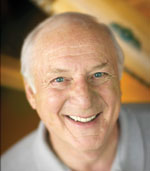Proficient Pilot
Aeronautical dinosaur
 Sometimes when I write about the so-called “good old days,” I can usually anticipate some readers accusing me of being an aeronautical dinosaur. I can understand that kind of sentiment directed toward someone who refuses trying to embrace new technology. But I don’t think it is fair to hurl such comments toward someone who continues to find value and, perhaps, superiority in traditional (old-fashioned) methodology.
Sometimes when I write about the so-called “good old days,” I can usually anticipate some readers accusing me of being an aeronautical dinosaur. I can understand that kind of sentiment directed toward someone who refuses trying to embrace new technology. But I don’t think it is fair to hurl such comments toward someone who continues to find value and, perhaps, superiority in traditional (old-fashioned) methodology.
For example, I was discussing flight training with a young instructor who teaches at a school that utilizes a fleet of Cessna 172SPs equipped with Garmin G1000 glass cockpits. I was curious to know how she used such technology to teach beginning students to develop proficiency in the four basic elements of flight: straight and level, turns, glides, and climbs. It saddened me that her explanation involved heavy reliance on instrumentation (especially attitude and airspeed indicators).
OK. Here’s where you might want to call me a dinosaur.
I learned to fly in an Aeronca 7AC Champion. We called it an “Airknocker” or a “Champ.” Its Spartan instrument panel did not have an attitude indicator, and its airspeed indicator was less than reliable. Yet my instructor, Mike Walters, did a credible job of teaching his students by using an old-fashioned methodology that I am convinced made us and others of my generation better pilots than had we been taught using glass cockpits.
My first flying lesson began with attempting to hold the airplane in straight-and-level flight. Walters set the power of that 65-horsepower Continental engine and told me that I could maintain altitude by keeping the bottoms of the wings parallel to the horizon. He also had me look back and forth between the right and left wings to ensure that there was the same amount of space between each wing tip and the horizon. This, I learned, was the best way to know that the wings were level and the airplane was not turning. I confirmed that I was maintaining a constant heading by observing that the nose was not moving left or right across the horizon.
It was only after I learned to maintain straight-and-level flight using just aircraft attitude as a reference that I was allowed to refer to the altimeter and the tachometer.
Walters taught me to turn by initially asking me to keep my feet flat on the floor. While heading toward a prominent landmark on the horizon, he asked me to use only the ailerons to begin a left or right turn. “Watch the landmark,” he would demand. “Do you see how it moves the wrong way? This is adverse yaw effect, and now you know why there’s a rudder on this machine.” He proclaimed this proudly, as if he had personally discovered the fact. “Use the rudder to prevent the nose from moving in the wrong direction.” And so it was that he taught me to turn without ever looking at anything in the cockpit. Rolling in and out of turns with reference to landmarks helped me to quickly develop rudder coordination and proficiency.
I enjoyed gliding flight the most. After applying carburetor heat and throttling the engine to idle, Walters had me hold the same attitude I had used in straight-and-level flight. Once I learned to do that, he would say, “OK, now. Just lower the nose a little bit, and you’ll be gliding in the most efficient manner.” He never mentioned glide speed or allowed me to look at the airspeed indicator until I had learned to glide, make gliding turns, and level off with the outside world as my sole reference.
Climbing, of course, was taught from straight-and-level flight. He had me aim at some distant point, open the throttle fully and then raise the nose with the wings level until the cowling was touching the horizon. He didn’t discuss the left-turning tendency of the airplane until after I had discovered it for myself. “Hey, Mike,” I yelled from the front seat, “How come the nose keeps moving left even though the wings are level?” He yelled back that he would explain this on the ground and then asked, “How can you stop that movement?” I apparently said the right thing because I got a pat on the top of my head, far preferable to when I screwed up and got whacked on the side of my head with a rolled-up aeronautical chart.
Students of my era learned to fly by looking out the window and using the controls to achieve the desired visual result. The altimeter and airspeed indicator—those were the only available flight instruments—were used only as occasional references. They were never used to fly the airplane. Attitude and the basics were more important than numbers.
Is this method of teaching someone to fly better than presenting a student with an instrument panel that looks more like a computer monitor than an airplane? I think it is, and if I were teaching someone to fly in a technologically advanced airplane (TAA), I would be inclined to cover the instrument panel almost entirely so that only the necessities were visible. I would teach someone to fly the way Mike Walters taught me.
As a matter of fact, if I were king of the FAA, I would require manufacturers of glass cockpits to provide a switch that hid all of the fancy stuff and allowed instructors to teach people to fly without technological distractions.
Perhaps I really am an aeronautical dinosaur.
Barry Schiff has been writing for AOPA Pilot for 48 years. Visit the author’s website.


